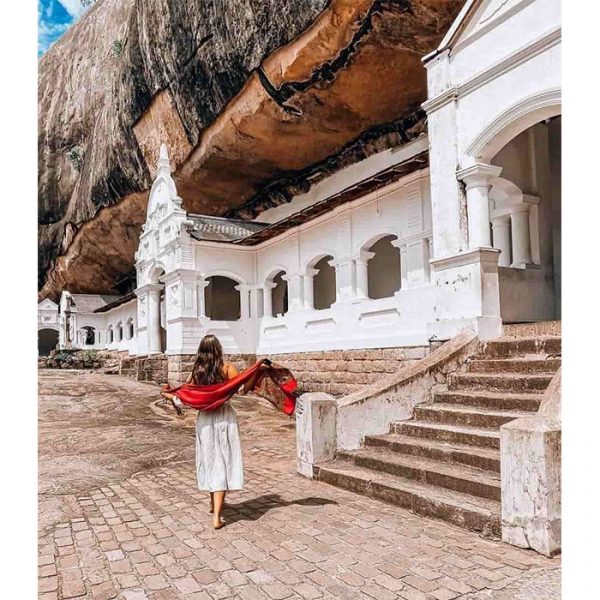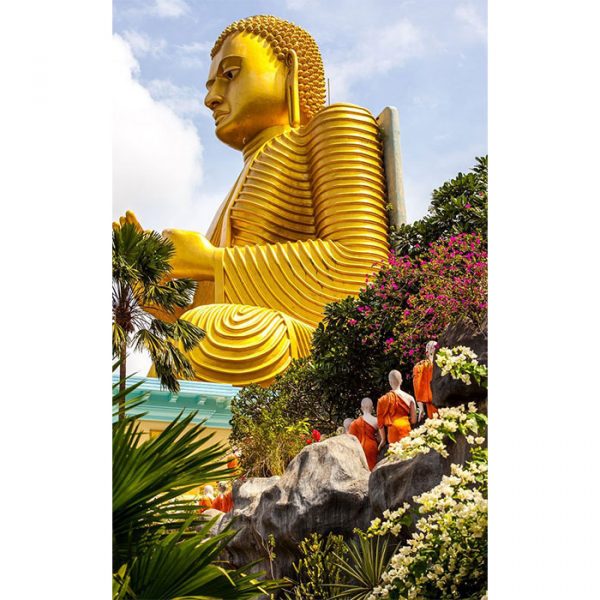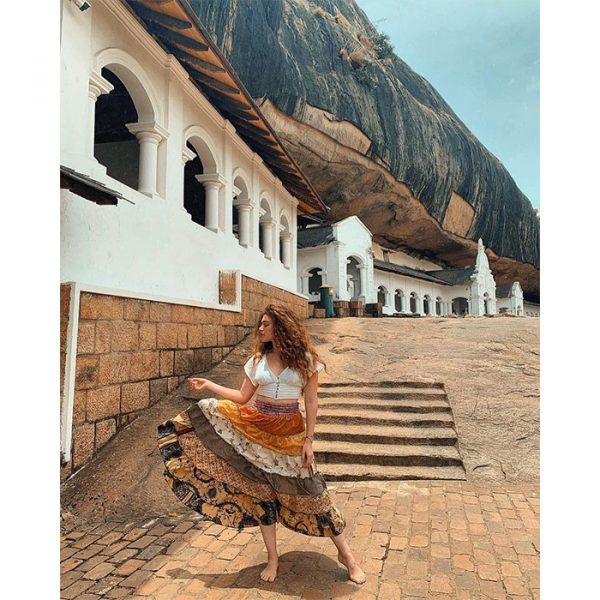Dambulla Cave Temple is a vast isolated rock mass and it was here that king Valagambahu took refuge in the 01st century B.C. when fleeing from his enemies. He later turned the caves into a rock temple. The Golden Temple of Dambulla has been the centre of pilgrimage for Buddhists and Hindus like for 22 centuries. It is Sri Lanka’s most popular historic site. The Cave monastery, home to Buddhist monks is covered with exquisite 2,000 year-old murals depicting the life and times of the Lord Buddha. The shrines also house a collection of 157 statues of Buddha in various sizes and poses, including a 15 metre long reclining Buddha and vividly coloured frescoes on the walls and ceiling, making this the largest antique painted surface in the world. To reach Dambulla’s rock temples, pilgrims and tourists alike must climb barefoot up the sloping ground and several series of stairs almost to the summit, 100 metres above the plain. From here, the strikingly distinctive rock fortress of Sigirya is visible, but the five caves or shrine rooms of Dambulla lie just ahead. All of these house multiple images of the Lord Buddha, either lying, standing or seated. The astonishing frescoes and the sheer size and antiquity of the caves convinced UNESCO that Dambulla should be preserved as a World Heritage Site.






